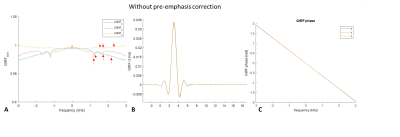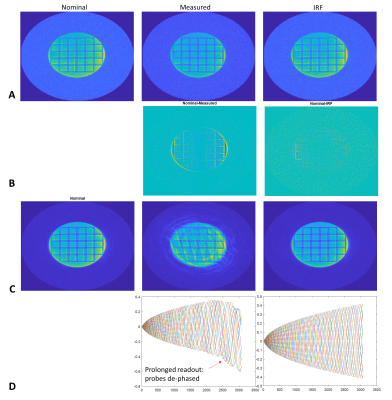Nastaren Abad1, Afis Ajala1, Yihe Hua1, and Tom K.F Foo1
1General Electric Global Research, Niskayuna, NY, United States
1General Electric Global Research, Niskayuna, NY, United States
In this study a field
monitoring system was used to characterize a head-only, high-performance
gradient coil (MAGNUS),by determining the gradient transfer function. The modulation function indicated good
correspondence for arbitrary waveforms and non-cartesian k-space trajectories.

Figure
2. Magnitude (A), time-domain (B) and phase (C) of measured gradient IRF for
the three axes, without pre-emphasis compensation. The arrows highlight channel
specific known mechanical resonances at lower frequencies. No filtering has
been used on this data. Notably, measurement noise in the IRF increases towards
the higher frequencies, where the power of the input waveform is null.

Figure
4. Representative images for two different readouts for a 2D spiral acquisition.
For the shorter readout (A) both monitored and IRF demonstrate distinct
sharpening of the grid lines and decreased blurring at the edges, compared to
nominal reconstruction, also evident in the difference images (B). For the
longer readout (C), error in correction for the field monitored measurement is
a result of the probes dephasing during the long readout (D). IRF predicted
trajectory correction can be used to compensate for this.